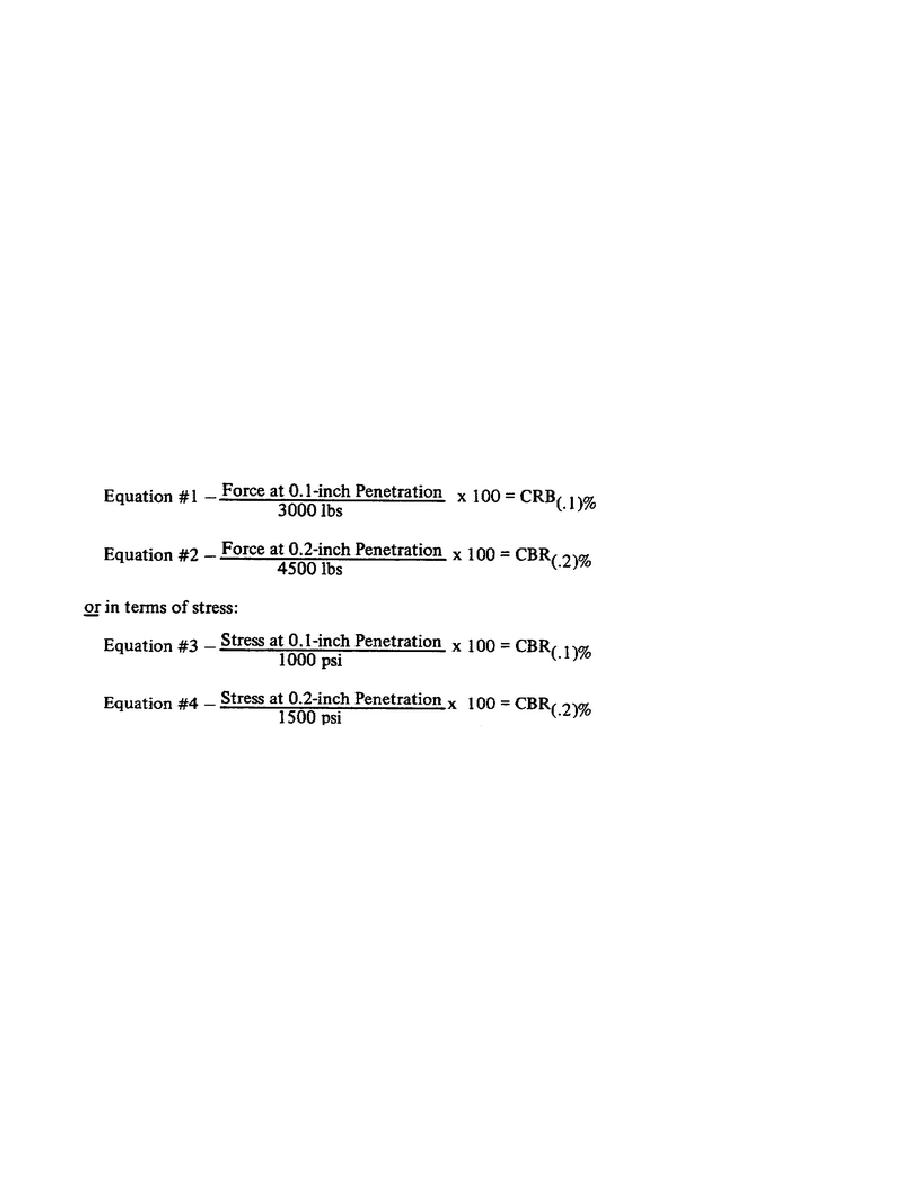
Lesson 5/Learning Event 2
Learning Event 2
DESCRIBE CBR TESTS WITH APPLICATIONS, ADVANTAGES, AND DISADVANTAGES
Since 1940, the Corps of Engineers has performed continuous investigations relative to flexible
pavement design. Although the CBR method of design is considered a semi-empirical approach where
each of the factors relating to a soil's ability to resist traffic loads has not been individually analyzed, its
worth as a design method lies in the fact that over 40 years of experience with actual pavement
structures have provided the basis for our present design cues.
CBR TESTS AND APPLICATIONS
The CBR is an index of the shearing resistance of soil obtained by forcing a steel piston having a three
square inch end area into the soil at a rate of 0.05 inch per minute and measuring the force required to
achieve 0.1 and 0.2 inch of penetration. The force obtained is ratioed against the standard test values of
3000 and 4500 pounds for a standardized crushed limestone (one which passes the 3/4-inch sieve and is
well graded) according to the following expressions:
The basic operations for conducting the CBR test are the same regardless of variations in soil conditions
and types of construction.
The test essentially measures the soil resistance to penetration prior to reaching its ultimate shearing
value. It is not exactly a measure of the shearing modulus since the confining effects of the molds to
exert some influence. The CBR is designated as a ratio in percent from 0 to 100 with a crushed well-
graded (pausing through the 3/4-inch sieve) limestone serving as the 100 percent material.
113



 Previous Page
Previous Page
